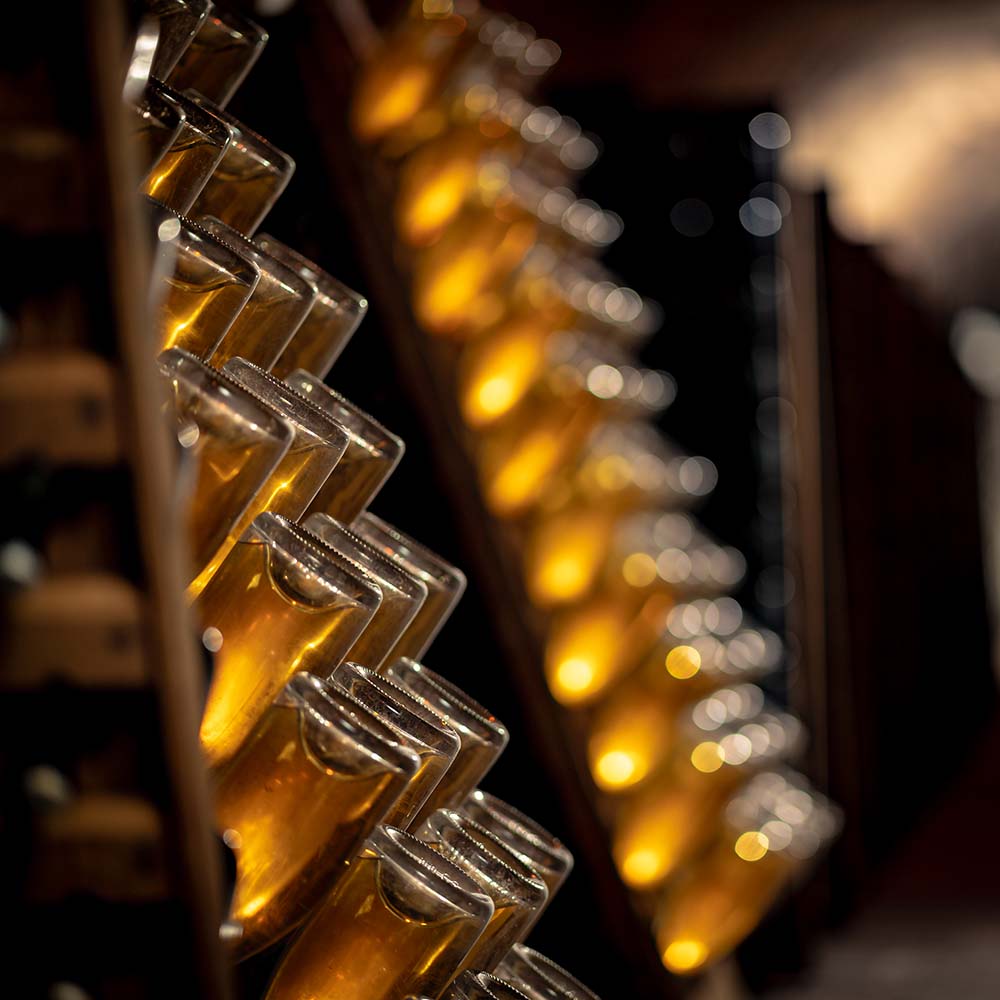3. freshness
Malolactic fermentation, a process commonly used in wine-making, stands out for its influence on taste characteristics. However, Maison Besserat de Bellefon has chosen a different path to create exceptional cuvees by deliberately avoiding malolactic fermentation.
A traditional process
Malolactic fermentation is a chemical transformation that converts malic acid, present in the grape must, into lactic acid. This reaction, catalyzed by lactic acid bacteria, helps to soften the wine by reducing its total acidity.
Vinification without malolactic fermentation requires a high level of hygiene, favored by the use of stainless steel tanks, good thermoregulation of the tanks with a rapid drop in temperature to 10°C after the end of alcoholic fermentation, and very strict analytical and organoleptic monitoring to avoid any drift. Vinification without malolactic fermentation enables:
1. Preserving the natural freshness of our wines
By avoiding malic acid conversion, our cuvees retain a natural acidity that brings finesse and freshness to every sip.
2. Develop a greater palette of elegant aromas
The non-malolactic process preserves the very essence of the fruit, allowing aromas and flavors to manifest themselves more authentically. The preserved liveliness of our cuvees creates a delicate, elegant effervescence, underlining the exceptional quality of our Champagnes.
3. Increase the ageing potential of our wines
Wines have a greater capacity to age, developing complex, harmonious notes over time.
 our "maison"
our champagnes
simplicité line
élégance line
liberté line
prestige line
5th element
Réserve Collection
Anniversary Cuvée
our style
our suites
our champagne bar
our "maison"
our champagnes
simplicité line
élégance line
liberté line
prestige line
5th element
Réserve Collection
Anniversary Cuvée
our style
our suites
our champagne bar









